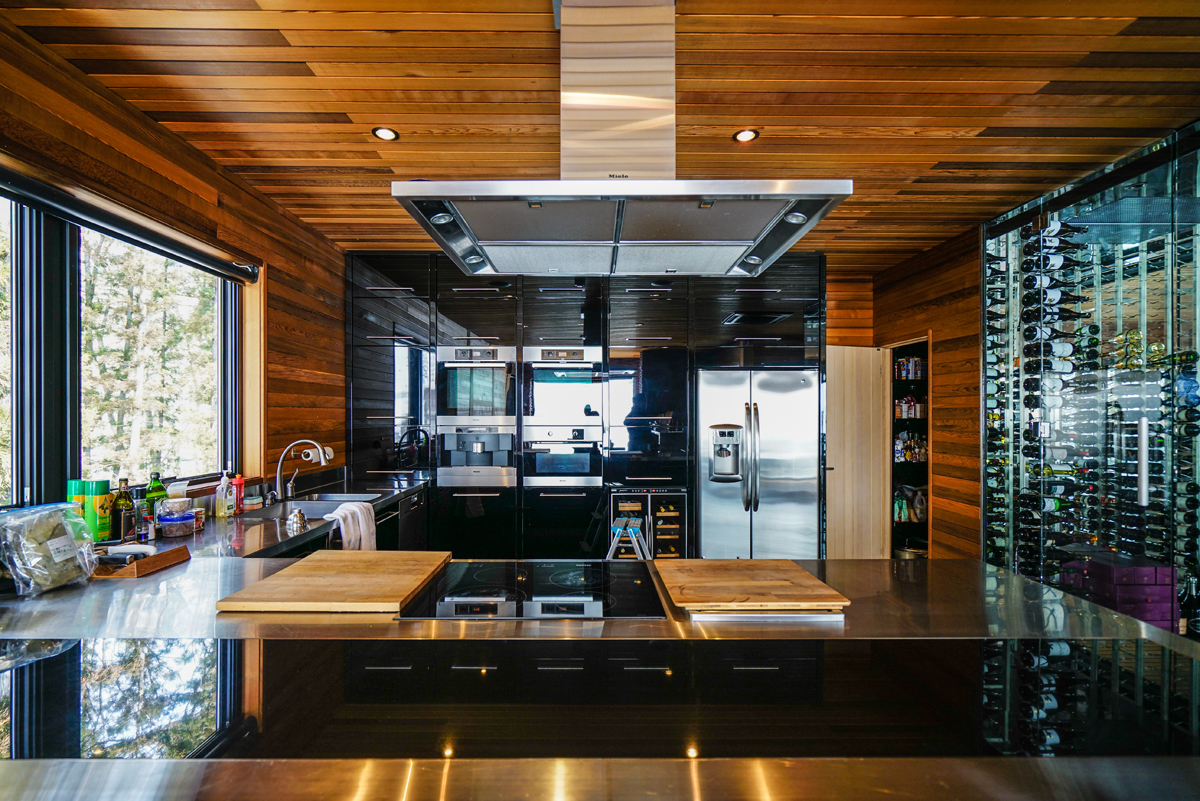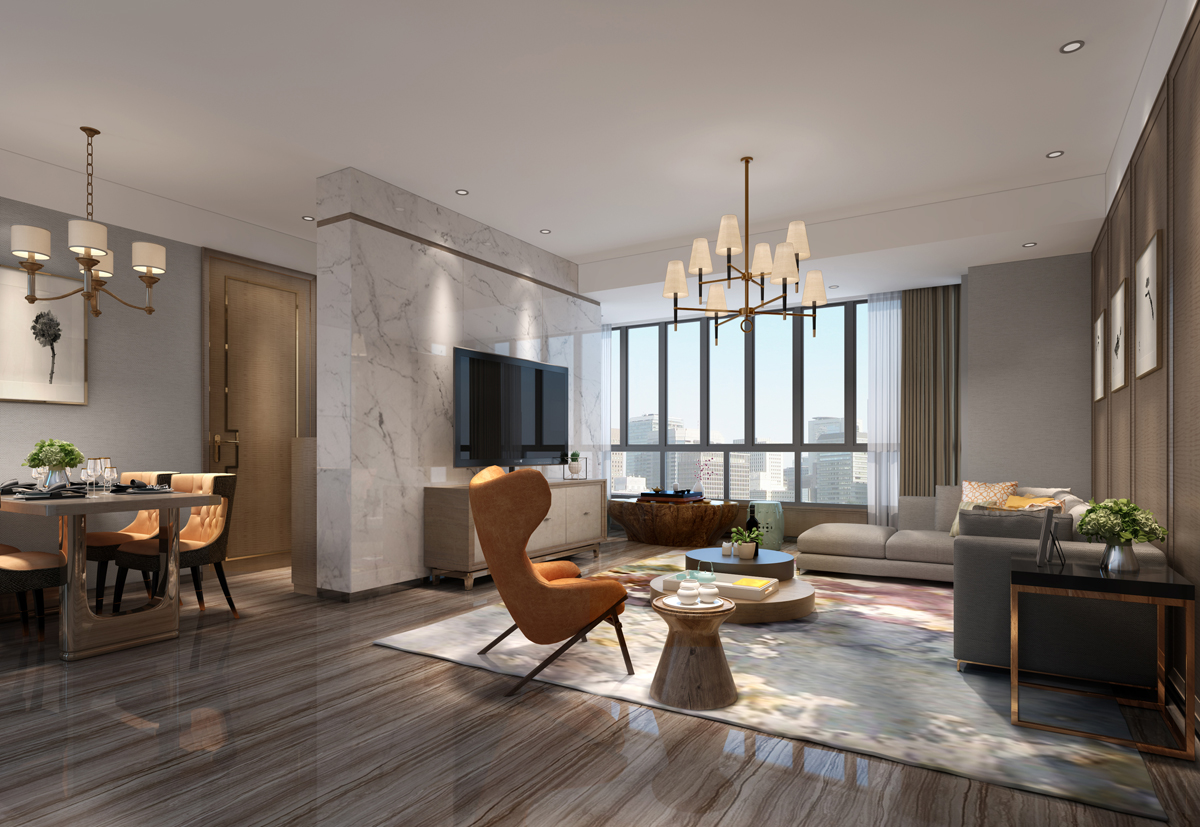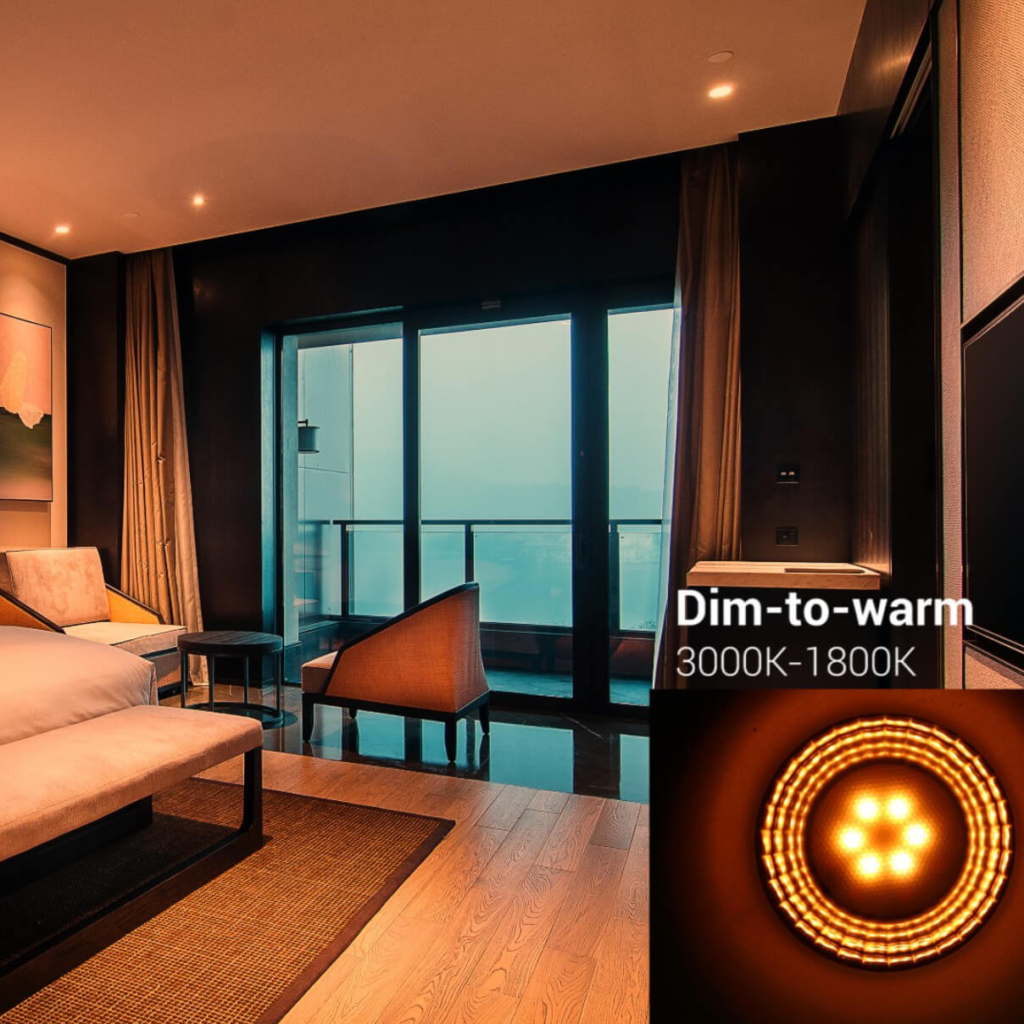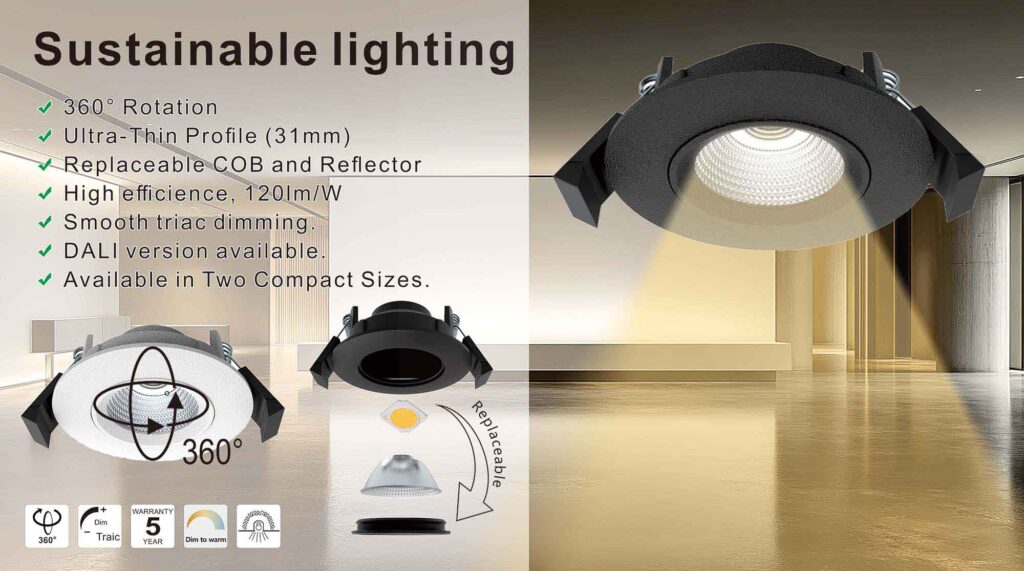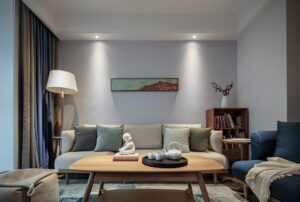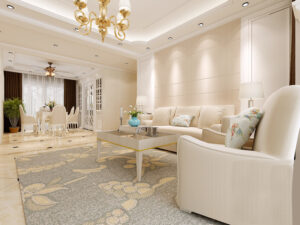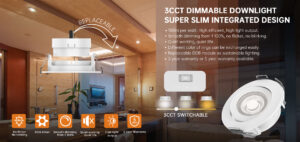Lighting solutions have become increasingly sophisticated, offering more than just illumination-they now shape our environments, influence our wellbeing, and adapt to our daily needs. Two of the most innovative developments in this field are tunable white downlights and dim to warm downlights. Both technologies transform how homes, offices, and commercial spaces in Europe and beyond use light to create the right ambiance and support human-centric design.
This comprehensive guide will explain what tunable white downlights are, how they work, how they are installed and controlled, and how they differ from dim to warm downlights. We’ll also introduce Radians Lighting, a leading European supplier, and provide practical advice for buyers, designers, and end-users.
Understanding Tunable White Downlights
What is a Tunable White Downlight?
A tunable white downlight is a recessed lighting fixture that allows users to adjust the color temperature of the light it emits. Unlike traditional LEDs that are fixed at a single color temperature, tunable white downlights can smoothly transition between warm white (about 2700K) and cool white (up to 6500K or higher). This flexibility enables users to tailor the lighting to suit different activities, times of day, or moods.
The core of this technology is the use of multiple LED chips with different color temperatures inside one fixture. By adjusting the output of each chip, the overall light color can be tuned to any point between the warmest and coolest settings. This is measured in Correlated Color Temperature (CCT), with lower values meaning warmer, more yellow light, and higher values meaning cooler, more blue-toned light.
How Tunable White Downlights Work
Tunable white downlights use dual-channel LED arrays-one channel for warm white and one for cool white. The fixture’s controller manages the current sent to each channel, mixing their outputs to achieve the desired color temperature. This process is controlled independently from the overall brightness, allowing users to set both the intensity and the color temperature to their preference.
Control systems can range from simple wall dimmers to advanced digital protocols like DALI, 0-10V, or DMX. Increasingly, these downlights are also compatible with smart home platforms such as Zigbee, Wi-Fi, or Bluetooth, enabling control via smartphone apps or voice assistants. This adaptability supports energy efficiency, wellbeing, and customizability in both residential and commercial settings.
Applications and Benefits
- Healthcare: Supporting patient recovery and circadian rhythms by mimicking natural daylight cycles.
- Education: Enhancing concentration and relaxation at different times of day.
- Commercial spaces: Creating dynamic atmospheres in offices, retail, and hospitality.
- Residential use: Adapting light for morning routines, evening relaxation, or task lighting.
Key benefits include:
- Energy savings through optimized brightness and color temperature.
- Personalized lighting for any activity or mood.
- Support for human-centric lighting principles, improving comfort and productivity.
- Smart control integration for seamless operation.
For more details on tunable white downlights, visit Radians Lighting’s CCT Downlights.
How Tunable White Downlights Work: Technical Details
Dual-Channel LED Arrays
At the heart of tunable white downlights are two sets of LEDs-one emitting warm white and the other cool white. By adjusting the current to each set, the system blends the two colors to achieve any desired CCT within the fixture’s range. This is managed by a dedicated LED driver and a compatible controller.
Control Protocols
Tunable white downlights can be controlled using several methods:
- 0-10V Dimming: Two separate 0-10V signals-one for brightness, one for color temperature.
- DALI: Digital Addressable Lighting Interface allows for precise, programmable control and integration with building management systems.
- DMX: Common in theatrical and architectural lighting for dynamic effects.
- Smart Controls: Wireless protocols like Zigbee, Wi-Fi, or Bluetooth enable app and voice control.
Typical Wiring Diagram
| Component | Connection Details |
|---|---|
| LED Fixture | Warm white and cool white wires to driver channels |
| Driver | Connects to mains power and control system |
| Controller | 0-10V, DALI, DMX, or smart receiver for independent brightness and CCT control |
Control Options
- Wall dimmers for manual adjustment
- Touch panels for advanced programming
- Apps and voice assistants for remote and automated control
For more on installation, see Radians Lighting’s installation guide.
Step-by-Step Installation Guide
- Determine Placement and Cut-Out Size
Select the location and cut the ceiling hole to match the downlight’s requirements. For example, Radians Lighting offers downlights with various cut-out sizes to fit different needs. - Wiring the Fixture
– Connect the fixture’s warm and cool white LED wires to the appropriate terminals on the driver.
– Connect the driver to the main power supply (live, neutral, earth).
– For multi-fixture installations, ensure each driver is rated for the total load. - Connecting the Control System
– For 0-10V: Run two control wires from the wall dimmer to the driver (one for brightness, one for CCT).
– For DALI: Connect the driver to the DALI bus for digital control.
– For smart controls: Pair the driver with the wireless receiver or hub. - Mounting the Downlight
Insert the fixture into the ceiling, securing it with spring clips or brackets. Ensure the fixture is flush and the wiring is safely tucked away. - Testing and Commissioning
Turn on the power and test both the brightness and color temperature controls. Adjust as needed to verify smooth operation.
What is a Dim to Warm Downlight?
Definition and Function
A dim to warm downlight is a fixture that mimics the behavior of traditional incandescent bulbs. As the light is dimmed, the color temperature automatically shifts from a neutral white (about 2700K-3000K) to a much warmer, amber glow (down to 1800K). This creates a cozy, inviting atmosphere, perfect for residential and hospitality settings.
Unlike tunable white downlights, dim to warm fixtures do not allow independent control of brightness and color temperature. Instead, both parameters change together on a single dimming curve.
How Dim to Warm Downlights Work
Dim to warm downlights use specialized LED chips that are engineered to change color temperature as the current is reduced. The driver and control system are designed so that as you dim the light, the fixture automatically shifts to a warmer color. This is typically managed by a TRIAC, 0-10V, or DALI dimmer, depending on the fixture.
Installation and Control
Installation is straightforward and similar to standard LED downlights. The fixture is wired to the power supply and a compatible dimmer. When the user dims the light, both the intensity and color temperature change together.
Control is usually via a wall dimmer or compatible smart system. No special programming is required, making these fixtures ideal for retrofits and renovations.
For more, see Radians Lighting’s Dim to Warm Downlights.
Key Differences: Tunable White vs. Dim to Warm Downlights
| Feature | Tunable White Downlight | Dim to Warm Downlight |
|---|---|---|
| Color Temperature Range | Adjustable from ~2700K to 6500K (warm to cool white) | Shifts from ~2700K to 1800K (warmer as it dims) |
| Control | Independent control of brightness and color temperature | Single input controls brightness and color temperature simultaneously |
| Use Cases | Dynamic, task-focused environments (offices, healthcare) | Ambiance-focused, cozy spaces (homes, restaurants) |
| Technology Complexity | Requires dual LED chips and advanced dimming systems | Uses specialized LED chips with linked dimming |
| Energy Efficiency | High, with customizable output | Moderate, mimics incandescent dimming behavior |
| Installation | Often new construction or advanced retrofit | Ideal for retrofit and remodel without rewiring |
Radians Lighting: European Expertise in Downlights
Radians Lighting is a trusted manufacturer and supplier of high-quality LED downlights, serving Germany, the Netherlands, France, Sweden, Denmark, Norway, the United Kingdom, and other European markets. The company is recognized for its product customization, innovative design, and strict quality control.
Customization and Design Excellence
Radians Lighting offers tailored solutions for tunable white and dim to warm downlights, including:
- Custom color temperature ranges and wattages
- Variety of sizes and trim styles to suit different ceiling types and interior designs
- Compatibility with all major control protocols, including DALI, 0-10V, Zigbee, and more
The design team works closely with architects, lighting designers, and project managers to ensure that every product meets the unique requirements of each application. Explore their full downlight range.
Production Quality and Compliance
Radians Lighting’s production facilities are ISO-certified and adhere to all relevant European standards, including CE marking and RoHS compliance. Each downlight undergoes rigorous testing for:
- Color consistency
- Dimming performance
- Durability
- Safety
Radians Lighting also provides detailed documentation and support for installers and end-users, ensuring a smooth experience from specification to installation.
Choosing the Right Downlight for Your Needs
When deciding between tunable white and dim to warm downlights, consider the following:
- Purpose of the space: Offices, classrooms, and healthcare facilities benefit from tunable white for dynamic, human-centric lighting. Living rooms, bedrooms, and restaurants often prefer the cozy ambiance of dim to warm.
- Control requirements: If you want independent control of brightness and color temperature, tunable white is the best choice. For simple, intuitive dimming, dim to warm is ideal.
- Installation complexity: Tunable white systems may require more advanced wiring and control systems, while dim to warm fixtures are often compatible with existing dimmers.
- Energy efficiency and compliance: Both options are energy efficient, but tunable white allows for more precise energy management.
For more guidance, see How to Choose the Right LED Downlight.
Advantages and Disadvantages Table
| Type | Advantages | Disadvantages |
|---|---|---|
| Tunable White |
|
|
| Dim to Warm |
|
|
Conclusion
Tunable white and dim to warm downlights represent the cutting edge of modern lighting, offering unique benefits for a wide range of environments. Tunable white downlights provide unmatched flexibility, supporting human-centric lighting and advanced smart controls. Dim to warm downlights excel at creating inviting, comfortable spaces with the nostalgic feel of incandescent dimming.
Radians Lighting stands out as a leading provider of both technologies, delivering customizable, high-quality downlights that meet the demands of European markets. Their commitment to design, quality, and customer support ensures every project achieves the perfect balance of aesthetics, functionality, and energy efficiency.
To explore the full range of tunable white, dim to warm, and other advanced LED downlights, visit Radians Lighting’s official website.

